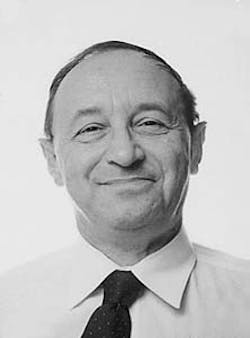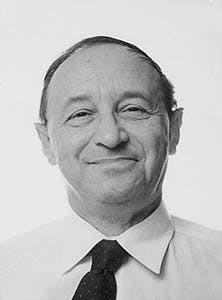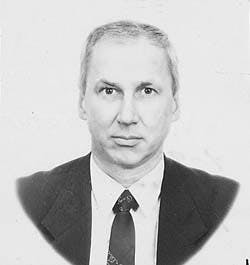Russia Struggles Toward Refinery Modernization Goals
Mikhail G. Rudin
Raytheon Engineers & Constructors
HoustonValeri S. Plotnikov
Sibur Co.
Nizhnevartovsk, Russia
- An ethylbenzene-styrene unit is under construction at the Salavat petrochemical plant at the Salavatnefteorgsintes refining and chemical complex. An atmospheric unit and low density polyethylene unit are planned.
- The 45 year old Novo-Ufa refinery needs modernization.
- A deep conversion complex-including a vacuum unit, vacuum gas oil hydrotreater, fluid catalytic cracker, and visbreaker-was completed in 1995 at Sibneft's Omsk refinery.
- Russia's first linear alkylbenzene unit was completed last year at the Kirishi refinery 85 miles southeast of St. Petersburg.
The archaic infrastructure of the refining industry in Russia does not allow for the efficient use of crude. More than 38% of crude run in Russian refineries is converted to heavy fuel oil used in power plants. Capacities of bottom-of-the-barrel conversion units are much smaller than those in the U.S. and other members of the Organisation for Economic Cooperation and Development. Total capacities of catalytic cracking, hydrocracking, and thermal operations in Russia are only 14% of crude charge capacity, compared with 64% in the U.S. and 34% in the OECD.
The quality of Russian oil products is substantially less than in the West. Only 43-45% of produced gasoline is unleaded, and gasoline with an octane number higher than 92 (research method) accounts for less than 20% of the total. The portion of total diesel fuel containing less than 0.2% sulfur is 65-70%. Some refineries in Russia have no middle distillate hydrotreater and are manufacturing diesel fuel with sulfur content exceeding 0.5%.
Refinery units are old; the running time of the majority of process units is 2-2.5 times more than normative, and equipment is more than 80% depreciated.
In 1996, the Russian government approved and gave to the Ministry of Fuel and Energy a program for refinery reconstruction and modernization. The program period is 1996-2000. Because of politics and economics, however, less than half of the program objectives will be accomplished in that period. It is reasonable to evaluate the program as a major direction for Russian refineries within a period stretching to 2005-2010.
The program states the following goals:
- Increasing conversion capacity to satisfy Russia's needs for light fuels and lube oils in the face of falling production of crude oil.
- Minimizing the consumption of energy and materials used in processing.
- Upgrading environmental quality at refinery sites and surrounding residential areas.
To meet Russia's requirements for oil products, refineries will have to maintain a volume of 190-220 million tons/year (4.2-4.8 million b/sd) during the next 3-4 years. Depth of processing-the share of the product slate other than heavy fuel-should rise in this period from 63% to 73-75%.
Because of limits on investment resources, the Ministry of Fuel and Energy expects depth of processing to remain at 68-70% through 2000. With crude production not increasing, Russia will experience deficits in oil products and probably rely on imports from western Europe.
More than 60 refinery projects are in various stages of planning and implementation, including six crude units with total capacity of 29 million tons/year to replace old units; five fluid catalytic cracking units, 9 million tons/year; four hydrocrackers, 6.5 million tons/year; three delayed coking units; six middle distillate hydrotreaters; nine catalytic reformers; and four alkylation and isomerization units (Table 1 [48,179 bytes]). Companies will need to invest almost $8 billion in refinery projects by 2000 to meet construction and modernization objectives. Russian authorities assume that funding can come from refinery profits, state credits, and credit from domestic and foreign banks, including the U.S. Export-Import (Exim) Bank.
Refinery cash resources are officially estimated at $4-4.4 billion total cash on hand; a better estimate is $2.8-3 billion.
The following company-by-company review of Russian refinery projects supplements and updates a list compiled by one of the authors and others in 1996 (OGJ, Mar. 25, 1996, p. 47).
Lukoil
Modernization of the Permnefteorgsintes refinery-one of two operated by Lukoil, Russia's largest vertical integrated oil company-involves addition of up to 15 process units and revamping of existing units. Units identified for work include vacuum distillation, vacuum gas oil hydrotreating, fluid catalytic cracking (FCC), methyl tertiary butyl ether (MTBE), hydrogen production and purification, sulfur recovery, gas processing, C4 alkylation, visbreaking, tertiary amyl methyl ether (TAME), and C5-C6 isomerization. A 70,000 b/d T-Star unit has been selected to hydrotreat feedstock for a 53,000 b/d Texaco/Lummus FCC unit.The refinery's master plan involves three project phases. Investments for the first phase are estimated at $350 million. A vacuum distillation unit was completed in 1996. Design engineering and construction began for other units, but progress has been hurt by financing problems.
Yukos
The petrochemical part of Yukos, Russia's second-largest vertically integrated oil company, includes three refineries in the Middle Volga area. The largest is the Novokuibishevsk refinery, built after World War II. The refinery's process units do not meet modern standards, and conversion capacity is inadequate.A development program for the Novokuibishevsk refinery began with construction of Russia's first unit for selective treating of lube oils with N-methyl pyrrolidone under a license from Texaco with engineering by Babcock Contractors. The next step is construction of a complex to produce motor fuel. It will include:
- A naphtha splitter and naphtha hydrotreater with capacity of 2 million tons/year. Russia's Lengipro neftekhim is handling basic engineering, and Germany's Salzgitter is handling detailed engineering.
- A continuous catalytic reformer and C5-C6 isomerization unit. UOP is licensor, and Toyo of Japan is handling engineering.
Sidanko
Sidanko's Angarsk Petrochemical Co. (APC), a complex enterprise that makes motor fuels, lube oils, plastics, synthetic alcohols, and fertilizers, is to be modernized under a master plan prepared by ABB Lummus Global. Total investment is to be $1.8 billion, including $800 million for refining.Capital spending of about $170 million during 1996-2000 is to be used to revamp fluid catalytic cracking, catalytic reforming, and delayed coking units. Also planned is a new combined unit for production of lube oil.
The Khabarovsk refinery of Sidanko supplies much of the Russian Far East and could be the source of products for export from Pacific terminals. At present, however, product quality does not meet world standards. Reconstruction of this refinery would involve introduction of modern technology.
The first stage envisages construction of a continuous catalytic reformer with capacity of 600,000 tons/year, which would end production of leaded gasolines and increase output of high-octane gasoline. Chiyoda of Japan has carried out basic and detailed design.
The second stage of the reconstruction project, involving a jet and diesel fuel hydrotreating unit, hasn't progressed because of the lack of funds.
Sidanko's Saratov refinery, on stream since the early 1930s, needs modernization. Spain's Dragados and Russia's Vnipineft have outlined a program that includes mild hydro cracking of vacuum gas oil under a Unocal license and associated hydrogen and sulfur recovery units. Capital requirements are estimated at $300 million.
Refinery officials and financial consultants have applied for credits from the U.S. Exim Bank and Spanish Export Credit Insurance Agency.
Surgutneftegaz
The 17 million ton/year Kirishi refinery (Kinef), 85 miles southeast of St. Petersburg, can export more than 20% of its output to West Europe. In 1996 it became the site of Russia's first linear alkyl benzene and linear alkyl benzene sulfonate plant.Kinef suffers from a lack of bottom-of-the-barrel conversion units. Chevron and ABB Lummus Global are licensing technology and providing basic design for the modernization project. Part of the project will include a new hydrocracker based on Chevron's Isocracking technology.
Total outlay for the modernization project is estimated at $500 million, about $280 million of which is to be invested by 2000. General contractors and subcontractors had not been selected at this writing, however, and financing had not been secured.
Sibneft
The Omsk refinery of Sibneft ranks first in Russia on the basis of design capacity: 28 million tons/year. It supplies gasoline and diesel oil to the oil-producing areas of West Siberia. Unlike other Russian refineries, the Omsk plant is able to achieve a light product yield of about 85%, although the yield recently slipped below 80% because of demand for heavy fuel oil. Reconstruction and modernization are continuous at Omsk, financed by the refinery's revenues without resort to long-term debt.In 1995 at Omsk, Sibneft completed a vacuum distillation unit, with capacity of 4 million tons/year; an FCC unit with hydrotreater, 2.4 million tons/year; visbreaker, 1.6 million tons/year; and an MTBE unit. It is building a sulfuric acid alkylation unit licensed by Stratco, with engineering by Technip. Planned are reconstruction of a semiregenerative catalytic reforming unit to use UOP's CCR process and construction of a light naphtha isomerization unit.
Rosneft
Rosneft is reconfiguring its Krasnodarnefteorgsintes refinery, originally designed for gas condensate, to run crude. Its initial goals are converting the condensate splitter to crude distillation and linking the refinery with Russia's crude oil pipeline system.Rosneft's Komsomolsk refinery in the far eastern part of the country was built before World War II and is obsolete. It has no catalytic reforming or hydrotreating units, and offsite facilities are in poor repair.
Rosneft and the Ministry of Fuel and Energy plan to add 400,000 tons/year of catalytic reforming and 1.2 million tons/year of hydrotreating capacity at Komsomolsk.
The modernization program includes plans for a new oil terminal on the Pacific, which will extend the refinery's export capability. Investment of $300 million is assumed to be required during 1996-2000.
Tyumen Oil Co.
John Brown Engineering & Construction is participating in the first phase of modernization of Tyumen Oil Co.'s Ryazan refinery. The contract includes detailed engineering, procurement, and construction management services for revamping the FCC unit built with domestic technology in 1968. The unit's capacity will increase to 2 million tons/year from 750,000 tons/year. Amoco Eurasia is providing process technology, operating know-how, and overall management service.Construction is slow because of financing, which comes from current revenues. Later phases of Ryazan modernization will include construction of alkylation and hydrocracking units.
In the Nizhnetavdinsky district of the Tyumen region, Tyumen Oil plans to build a 4 million ton/year refinery near the city of Tyumen. The Torgily refinery will require 4 years to build and cost $700 million. The plant is close to feedstock sources and transportation and has the support of the Tyumen administration.
The project faces opposition from sources who point out that since 1995 the 4 million ton/year Surgut motor fuel plant has been supplying high octane gasoline, diesel fuel, and heavy fuel oil from Urengoy condensate and light oil. Also under construction in the Tyumen region is the 3 million ton/year Nizhnevartovsk motor fuel oil plant, which uses condensate and crude oil feedstock.
Slavneft
The 16 million ton/year Yaroslavlnefteorgsintes refinery of Slavneft suffers from lack of conversion capacity, feedstock inflexibility, and heavy energy use. A proposed revamping would increase depth of processing to 90% from 56% and add unleaded gasoline to the product slate.First steps of the 1996-2000 program include reconstruction of the catalytic cracking unit, for which Stone & Webster is providing services; construction of a hydrocracking unit; and construction of a catalytic reforming unit with continuous catalyst regeneration.
Komitek
The Ukhta refinery near the Arctic Circle, one of Russia's oldest, needs much work, including:- Completion of a 6 million ton/year atmospheric distillation unit and new tank farms.
- Construction of a middle distillate hydrotreater unit. Stork-Comprimo-SKL of Germany has an engineering, procurement, and construction contract for the work, valued at $40 million.
- Construction of a catalytic cracking unit. Refin, a consulting consortium in the former Soviet Union, is supervising selection of licensors and engineering companies.
Norsi Oil
At the Norsi refinery in the town of Kstovo, 20 miles from Nizhny Novgorod, a 1 million ton/year continuous catalytic reforming unit will be completed this year. UOP provided the process license and basic project management; Raytheon Engineers & Constructors is providing detailed engineering, procurement, and construction supervision.Norsi Oil also is building a 4 million ton/year complex including vacuum distillation, vacuum gas oil hydrotreating, catalytic cracking, visbreaking, MTBE, alkylation, and hydrogen units. The complex will increase Norsi's depth of processing from 50% (one of the lowest in Russia) to 75%. But lack of financing has all but halted construction.
East Oil Co.
Plans for the Achinsk refinery, built in 1983 and Russia's newest, are to increase capacity and extend yields of light products. The refinery supplies jet fuel, diesel, and heavy fuel oils to industrial cities in East Siberia.The refinery requires construction of a long residue vacuum distillation unit with delayed coking, which will raise depth of processing to 72% from 64%. A $62 million credit from the European Bank for Reconstruction and Development is financing the project, to be repaid with oil products from the refinery.
The Achinsk refinery also needs construction of a catalytic cracking unit. Refinery officials and Refin are selecting a licensor and contractor.
Bashkir Petrochemical Co.
The Ufa plant is the oldest of three Bashkir Petrochemical Co. refineries, having gone on stream before World War II. It recently completed a new FCC unit with hydrotreating and hydrogen units to handle feedstock.Proposed as the next step in Ufa's modernization is a continuous catalytic reforming unit with capacity of 600,000 tons/year. The unit, requiring capital investments estimated at $120 million, will replace semiregenerative catalytic reformers built in 1962 and 1965.
The 45 year old Novo-Ufa refinery requires modernization involving:
- Upgrading of the conventional semiregenerative catalytic reformer to a hybrid unit incorporating a fourth reactor fitted with a continuous catalyst regeneration section. The reactor will use IFP Dualforming technology.
- Construction of a sulfuric acid alkylation unit. Foster Wheeler negotiated a contract for the work.
- Construction of a hydroskimming unit including crude distillation, catalytic reforming, isomerization, and diesel hydrotreating to replace old units.
The revamping program for Bashkir's Ufaneftekhim refinery includes revamp of the hydrocracking unit and reconstruction of the aromatic plant, which started up in 1983, to increase paraxylene output by 50%.
Salavatnefteorgsintes
Like Angarsk, Salavatnefteorgsintes is a complex enterprise that manufactures not only motor fuels but also polyolefins, ethylene oxide, synthetic alcohols, ammonia, and urea. The plant was built in the 1950s with equipment for production of synthetic liquid fuel from brown coal; many units need replacement or modernization.Salavatnefteorgsintes is building an ethyl benzene-styrene unit and planning to install a new atmospheric unit and low density polyethylene plant.
Nizhnekamskneftekhim
The modern Nizhnekamskneftekhim petrochemical plant in Tatarstan produces polyethylene, polystyrene, synthetic rubbers, and other chemicals. A 6 million ton/year crude unit at the plant supplies straight-run naphtha to the ethylene plant. A hydrotreater is planned for upgrading byproduct diesel fuel.The next step in modernization is construction of a residual hydrocracking unit, but progress depends on financing.
The Authors
Mikhail G. Rudin has been a senior engineering advisor with Raytheon Engineers & Constructors since 1994. For 33 years before joining Raytheon he was with Lengiproneftekhim, a St. Petersburg engineering company, as a process manager and vice-president. Rudin has been involved in process design of refinery projects in the former Soviet Union and elsewhere and is the author of more than 17 textbooks and reference books. He holds an MS degree in chemical engineering and PhD in organic chemistry from St. Petersburg Technology University.
Valeri S. Plotnikov was a senior consultant of Poten & Partners Inc., New York, from February 1994 until June 1996, when he joined Sibur Co. He has worked in various positions in the Russian chemical and oil industries and has experience at the Avangard plant in Bashkiria and associated gas company Sibneftegaspererabotka in West Siberia. Before joining Poten & Partners, Plotnikov participated in the Russian Oil and Gas Executive Program of Tradix Associates and the University of Massachusetts at Boston. He holds an MS in chemical engineering from Kazan Institute of Chemical Technology and an MBA from Baku Institute of Oil and Gas.
Copyright 1997 Oil & Gas Journal. All Rights Reserved.


